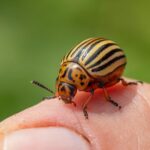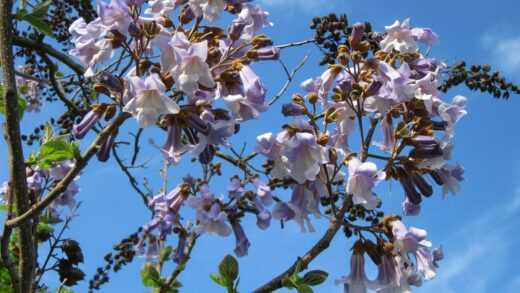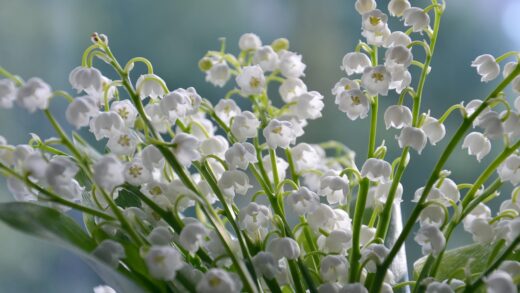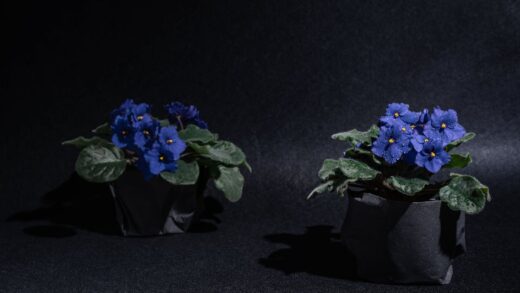To unlock the full, spectacular potential of the Caryopteris, providing it with an abundance of direct sunlight is not just a recommendation, it is an absolute necessity. This deciduous shrub is a quintessential sun-worshipper, and its entire performance, from its growth habit to the intensity of its celebrated blue blossoms, is directly linked to the amount of light it receives. While it may survive in conditions with partial shade, it will be a mere shadow of its potential self, often resulting in a plant that is structurally weak and disappointingly sparse in its floral display. Therefore, when choosing a location for your bluebeard, you should prioritize a spot that is bathed in sunlight for the majority of the day, as this is the single most important environmental factor for its success.
The fundamental reason for this strong preference for sunlight lies in the process of photosynthesis. Like all plants, Caryopteris uses light energy to convert carbon dioxide and water into the sugars that fuel its growth, development, and, most importantly, reproduction in the form of flowers. Full, direct sunlight provides the maximum amount of energy for this process, allowing the plant to build the strong, sturdy stems and lush foliage necessary to support a profuse blooming season. In essence, more sun equals more energy, which translates directly into more flowers.
Ideally, a bluebeard shrub should be planted in a location where it will receive at least six to eight hours of direct, unfiltered sunlight each day. The more sun it gets, the better it will perform. A south-facing or west-facing aspect is typically perfect, as these locations receive the longest duration of strong sunlight throughout the day. This ample light exposure not only maximizes flower production but also contributes to the overall health and resilience of the plant, making it more robust and better able to withstand stresses such as drought or potential pest issues.
When deprived of adequate sunlight, the Caryopteris will exhibit several tell-tale signs of stress. The most noticeable effect will be a significant reduction in flowering; a plant in a shady spot may produce only a few scattered blooms or, in some cases, none at all. Furthermore, the color of the flowers that do appear may be a paler, less vibrant shade of blue. The plant’s growth habit will also be negatively affected. Instead of growing into its typical dense, compact, mounded form, it will become leggy and open as its stems stretch and reach for any available light source. This etiolation results in a weak, floppy structure that is less aesthetically pleasing and more prone to damage.
The effect of light on flowering and foliage
The quantity and quality of light have a profound impact on both the floral display and the foliage of the Caryopteris. The number of flower buds that the shrub sets is directly proportional to the amount of solar energy it can capture. In a full-sun environment, the plant is able to photosynthesize at its maximum capacity, creating a surplus of energy that it can then invest in producing an abundance of flower buds along its new stems. This results in the classic, breathtaking display of dense, bottlebrush-like flower clusters that makes the plant so popular.
More articles on this topic
Beyond the sheer number of flowers, sunlight also plays a crucial role in the intensity of their color. The pigments responsible for the vibrant blue and violet hues, known as anthocyanins, are often produced in greater concentrations when the plant is exposed to high levels of ultraviolet (UV) light, which is more abundant in direct sun. This is why a Caryopteris grown in full, bright sun will typically have deeper, richer, and more saturated blue flowers compared to one grown in a shadier location, whose flowers may appear washed out or faded.
The foliage of many Caryopteris cultivars also benefits from high light levels. Many varieties feature attractive silvery-green or gray-green leaves, and this coloration is often more pronounced and luminous when the plant is grown in full sun. The fine hairs on the leaf surface that contribute to this silvery appearance can become more dense as a protective measure against intense sun and heat, enhancing the plant’s ornamental quality. In lower light, the foliage may appear as a duller, more generic green, losing the distinctive silvery cast that provides such a beautiful contrast to the blue flowers.
Furthermore, a dense canopy of leaves, encouraged by ample sunlight, helps the plant to outcompete weeds for resources and creates a visually solid and appealing form in the garden. In shady conditions, the foliage will be much sparser, and the open, leggy habit will expose more of the woody interior of the shrub, detracting from its overall appearance. The combination of dense, silvery foliage and a profusion of intensely colored flowers is the hallmark of a healthy, well-sited Caryopteris, a result that is only achievable with sufficient sunlight.
Site selection and garden placement
Given its non-negotiable requirement for sun, careful site selection is the first and most critical step when integrating Caryopteris into your garden design. Before you even purchase the plant, take the time to observe your garden throughout the day to identify the areas that receive the longest duration of direct sunlight. Keep in mind that the position of the sun and the shadows cast by trees, buildings, and other structures will change with the seasons. A spot that is sunny in the early spring might become shadier as the leaves on deciduous trees emerge.
More articles on this topic
When planning your garden beds, place the bluebeard in the sunniest, most open positions. It is an excellent choice for south-facing foundation plantings, open mixed borders, or as a feature plant in a sunny rock garden or xeriscape design. Its drought tolerance, once established, makes it a perfect companion for other sun-loving, water-wise plants like lavender, Russian sage, sedums, and ornamental grasses. Planting it alongside these companions not only ensures it gets the light it needs but also creates a cohesive and resilient planting scheme.
It is important to consider the mature size of the shrub and the plants around it. Avoid placing Caryopteris where it will be overshadowed by faster-growing trees or larger shrubs. As it is a relatively compact shrub, typically reaching a height and spread of about one meter, it can be easily shaded out if not given its own space in the sun. When planting, give it adequate room to grow to its full size without being crowded, as this will also ensure good air circulation, which is beneficial for disease prevention.
If you have a garden that is mostly shady, it is unfortunately best to choose a different plant rather than trying to force a Caryopteris to grow in unsuitable conditions. While it may be tempting to try, the result will likely be a constant struggle and a perpetually underperforming plant. Acknowledging and respecting a plant’s fundamental requirements, such as the need for full sun, is the foundation of successful and rewarding gardening. There are many beautiful shade-loving plants that will thrive in those conditions, so it is always best to match the right plant to the right place.
Partial shade and its consequences
While full sun is the undisputed ideal, Caryopteris may tolerate a small amount of partial shade, particularly in very hot climates. In regions with scorching summer afternoons, a location that receives full morning sun but is protected from the most intense, direct afternoon sun can sometimes be beneficial. This can help to reduce heat stress and prevent issues like leaf scorch, especially if the soil is on the dry side. However, the definition of “partial shade” in this context is crucial; it means the plant should still receive at least six hours of direct sun daily.
If the amount of direct sun drops below this six-hour threshold, you will begin to see the negative consequences. A plant receiving only four or five hours of direct sun will likely still grow and produce some flowers, but the display will be noticeably diminished compared to a plant in full sun. The shrub’s form will start to become more open and less dense as it stretches towards the light source. It becomes a trade-off where you sacrifice some ornamental performance for the ability to grow the plant in a less-than-ideal spot.
In locations with less than four hours of direct sunlight, the plant’s performance will decline sharply. Flowering may become very sparse or fail to occur at all. The primary issue in deep shade is the lack of energy for the plant to initiate flower buds. The shrub will almost certainly become very leggy, with long, weak stems and sparsely spaced leaves. This weak growth is also more susceptible to flopping over, especially after heavy rain, and may be more vulnerable to pests and diseases. Essentially, in significant shade, the Caryopteris loses all of the key characteristics for which it is grown.
If you have an existing Caryopteris that is underperforming and you suspect a lack of sunlight is the cause, the best course of action is to transplant it to a sunnier location. The ideal time to move the shrub is in the early spring, just as new growth is beginning, or in the early autumn. By moving it to a spot where it can receive the six to eight hours of sun it craves, you will likely see a dramatic improvement in its health, form, and flowering in the following season. This simple act of relocating the plant to meet its light requirements can completely transform it from a struggling specimen into a garden star.


















